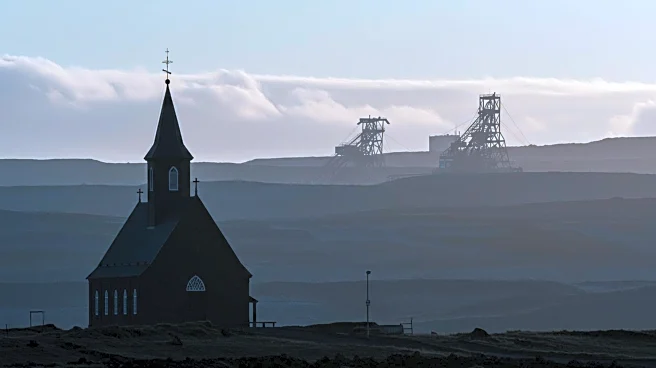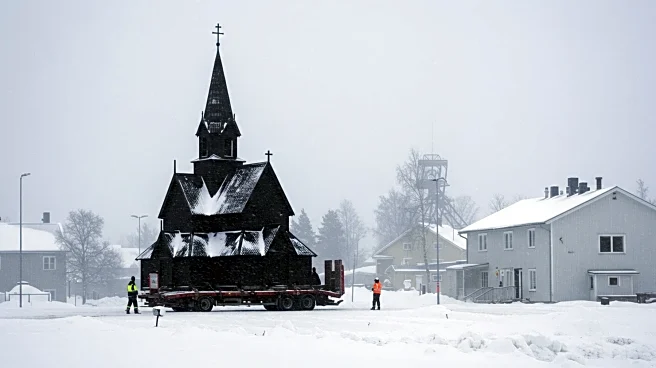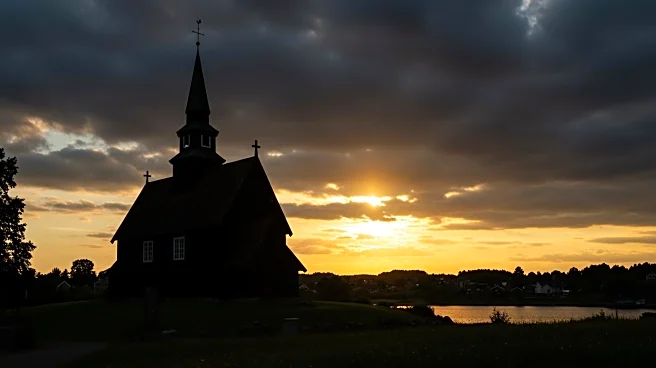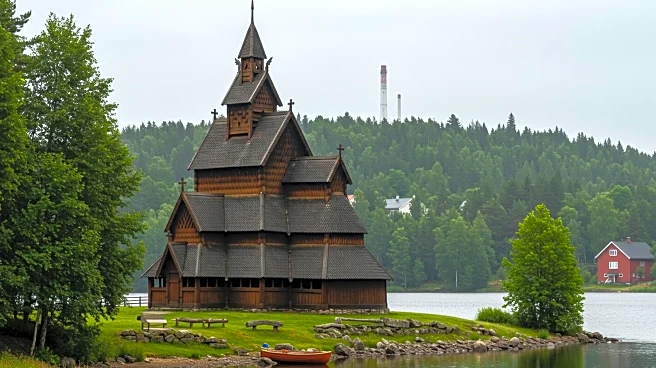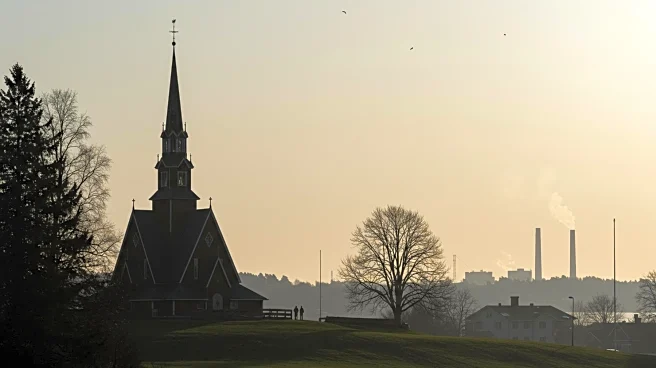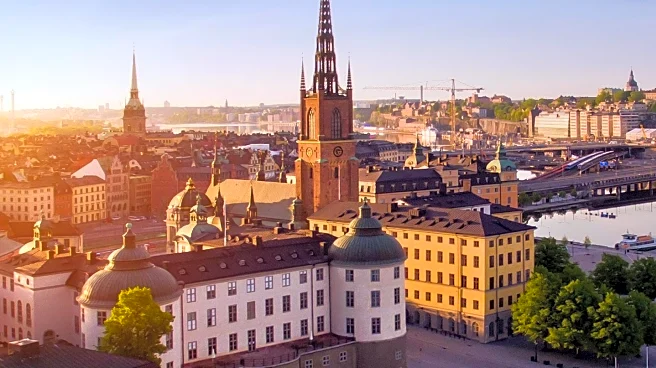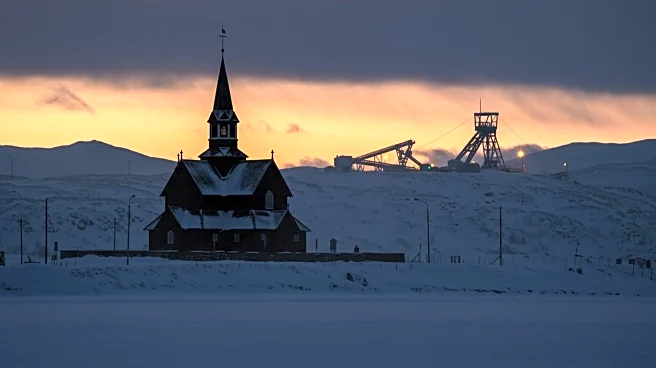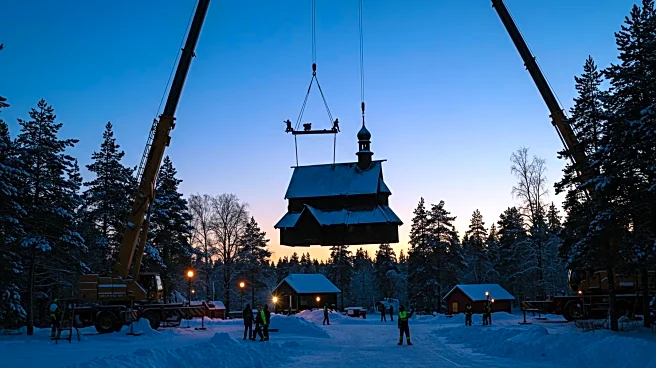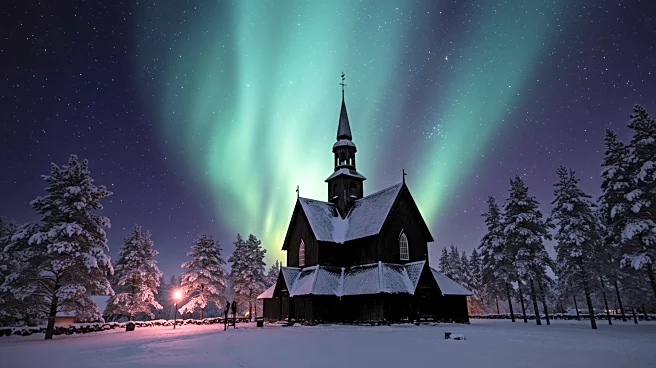Rapid Read • 8 min read
Sweden's iconic Kiruna Church, a 113-year-old architectural treasure, is being relocated to escape the subsidence caused by the world's largest underground iron ore mine. The church, weighing 600 tons, is being moved over a two-day, five-kilometer journey to a new town square. This relocation is part of a massive urban transformation plan to shift the entire city of Kiruna, piece by piece, due to the mine's expansion. The move is bittersweet for the community, as it involves leaving historic ground. The relocation is necessary to prevent the town from being swallowed by the mine, which has been expanding since the 1890s.
AD
The relocation of Kiruna Church is a significant event that underscores the impact of mining activities on local communities and cultural heritage. The move is part of a broader plan to relocate approximately 6,000 people and 3,000 homes due to ground instability caused by the mine. This project highlights the challenges faced by residents and the indigenous Sami people, whose traditional land is affected by the mine's expansion. The relocation also reflects the broader implications of resource extraction on community stability and environmental sustainability. The church's move is a symbolic representation of the delicate balance between economic development and cultural preservation.
The relocation of Kiruna Church is expected to conclude with its reopening at the new location by the end of 2026. The broader urban transformation plan will continue, with additional buildings being moved or rebuilt to ensure the town's safety. The mining company LKAB will likely face ongoing scrutiny regarding its impact on the Sami community and the environment. Stakeholders, including local residents and cultural preservationists, will be monitoring the project's progress and advocating for measures to protect the area's cultural and ecological integrity.
The relocation of Kiruna Church raises ethical questions about the prioritization of economic interests over cultural heritage and environmental sustainability. The move highlights the need for responsible resource management and the importance of engaging with indigenous communities in decision-making processes. The project also serves as a reminder of the long-term consequences of industrial activities on local ecosystems and cultural landscapes.
AD
More Stories You Might Enjoy
